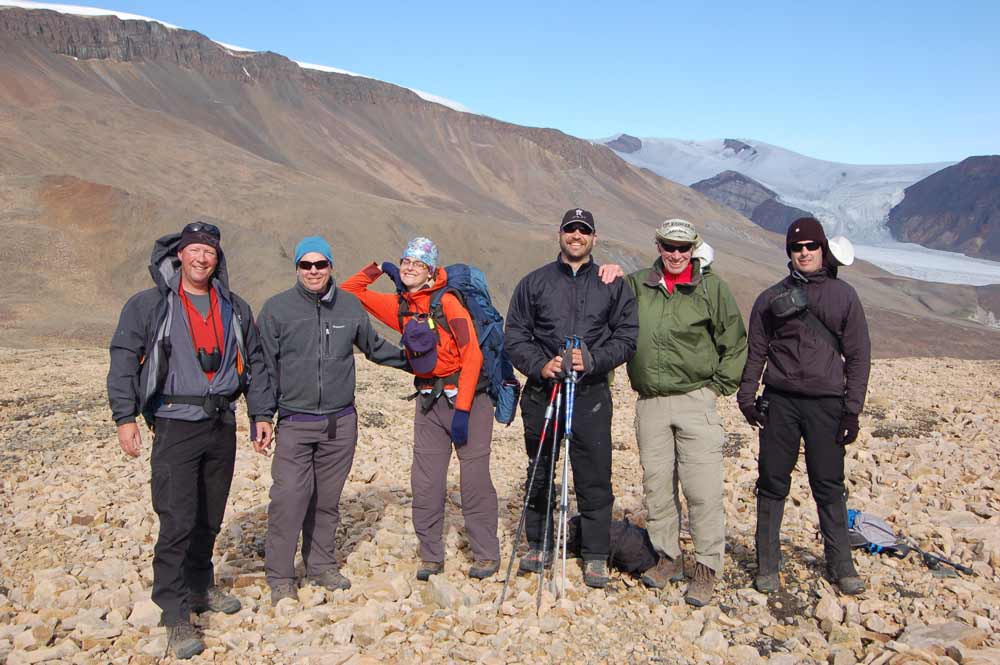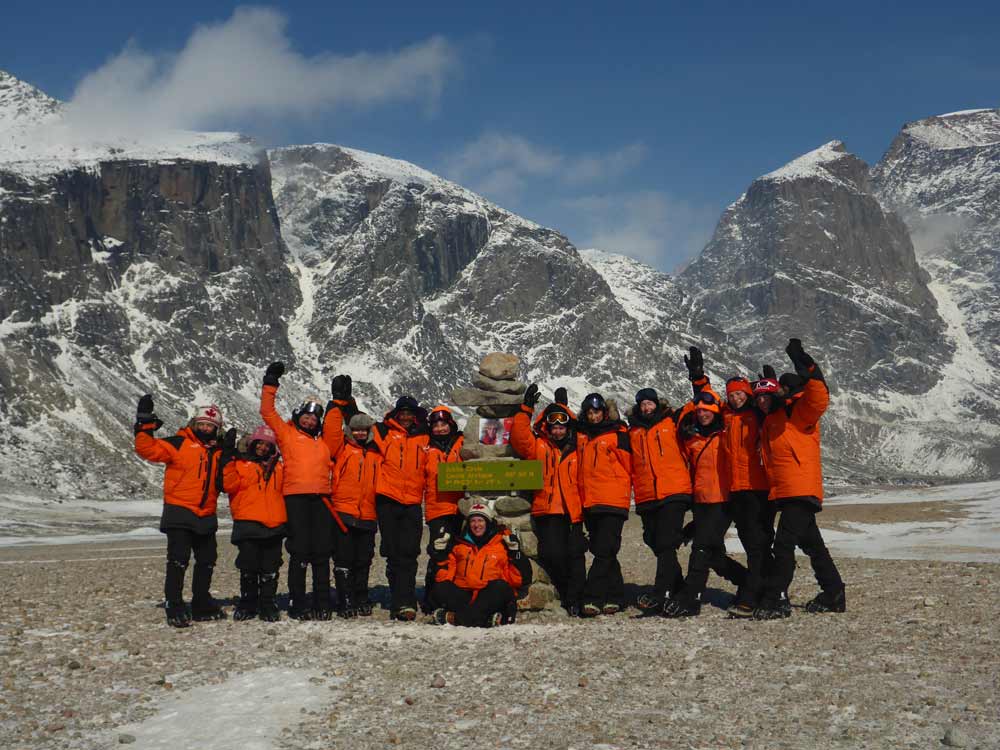We take the guesswork out of packing for the untamed, sometimes unpredictable, landscape of Nunavut.
Nunavut is a land of beautiful contradictions. The same environment that bestows sparkling sunny days and otherworldly scenery can also bring deep cold, rain, 24-hour darkness, and at the most extreme, -80 degrees windchill.
It may seem daunting to pack for this unique destination, and visitors are warned that unpredictable weather is always a possibility in the North. If you’re uncomfortable or unprepared on your trip, it can be hard to focus on anything else, so the gear you bring with you is of the utmost importance. We asked Wendy Grater, owner of wilderness adventure company Black Feather, to share the most essential, seasonally-appropriate items to pack for an adventure in Nunavut.
Summer

Lots of light, practical layers are the key to dressing in the summer.
Because the summer weather can fluctuate from sun-soaked days to below-zero evenings, layers are key for dressing in Nunavut’s climate. Ancient Inuit inhabitants of this land would wear layers made of skins and furs, with oil-treated waterproof outer layers. Today, high-tech fabrics allow for clothing strata that are comfortable and easy to pack.
“In the summer you want layers, and you want multiple lighter layers instead of two big thick layers,” says Grater.
She recommends long underwear, both long- and short-sleeve tops, and quick-drying wind pants that can be easily cleaned and hung to dry. “Quick drying is great because if an item gets dirty you can quickly rinse and hang it to dry in no time,” she says. “You won’t need to bring more than one.” Moisture-wicking fabric, such as smartwool or synthetic fabric, is also key for inner layers and socks.
In addition to an insulating secondary layer, such as a fleece jacket, Grater swears by her Gore-Tex gear. “You want something that’s waterproof and breathable that will keep the rain off, and yet won’t cause you to overheat,” she says. A down puff jacket or vest is also useful to keep the core warm on the colder days and can be easily compressed and squished down inside baggage.
At any time of year, a warm toque is important, as is a sunhat, sunglasses, sunblock, and lip balm with SPF.
Footwear should be substantial, supportive hiking boots with a good sole, which have already been fully broken in. But just in case, she suggests bringing moleskin or other blister protection.
Something that many travellers don’t anticipate is the number of insects that can occupy some regions of Nunavut in the warmer months. “Some areas, like the Barrens, are really buggy, so you will want a full bug jacket and bug hat with netting that comes down over your face, as well as a good repellent,” says Grater.
Winter

The parka is everywhere in the Arctic, and with good reason.
The most iconic and ubiquitous garment associated with Nunavut is the parka, and with good reason: they offer additional body coverage and face-framing fur trim to keep out the most bone-chilling winter winds. For extended outdoor trips in the winter, Grater highly recommends one of these ultrawarm coats. “I love my parka,” she says. “I wouldn’t go anywhere without it, and it’s definitely worth the extra bulk. That said, I would still take a down jacket, for added mobility and to wear on warmer days.”
Her other top picks for winter gear are insulated snow pants, high-quality winter boots with removable liners, and mittens that extend up the arm to protect your wrist from the wind. Thin liner gloves can be worn inside mittens to allow for short bursts of fine work, but Grater prefers to use a secret weapon.
“I’m a firm believer in those little hand warmer packets,” she says. “They’re a lifesaver, honestly.”
A buff, or pull-on neckwarmer, can come in exceptionally handy during the colder months. “Those can also be pulled up over your ears and the bottom of your face,” says Grater. Glasses-wearers whose lenses fog up when sporting scarves and other face gear may want to consider bringing contacts on the trip. “However if you’re camping, you’ll have to make sure your contact solution won’t freeze,” she cautions.
Small items, like hand warmers, and basics like medication and toiletries are best purchased before you leave for your adventure, as prices in Nunavut can be notably higher than in the south. Travellers may also have trouble finding specialty foods in Northern stores, so those with restrictive diets may want to pack their own snacks.
Ambitious travellers may have the impulse to over-pack to make sure nothing was missed, but Grater warns that some Nunavut airlines impose strict limitations on baggage size and weight.
“When you go into the smaller communities, the luggage allowances are less than the airports that have jet access,” she says.
It’s recommended to check the regulations on all scheduled flights so you don’t end up over the limit.
For planned exhibitions, most outfitters will provide a packing list for guests. One Ocean and Adventure Canada teamed up to put together a What To Pack basics list — check it out here. If in doubt, a call to your tour company will help to ascertain which items you’ll need for your planned experiences. With the proper preparation and arsenal of gear, you’ll be free to focus on simply enjoying every moment of your adventure.